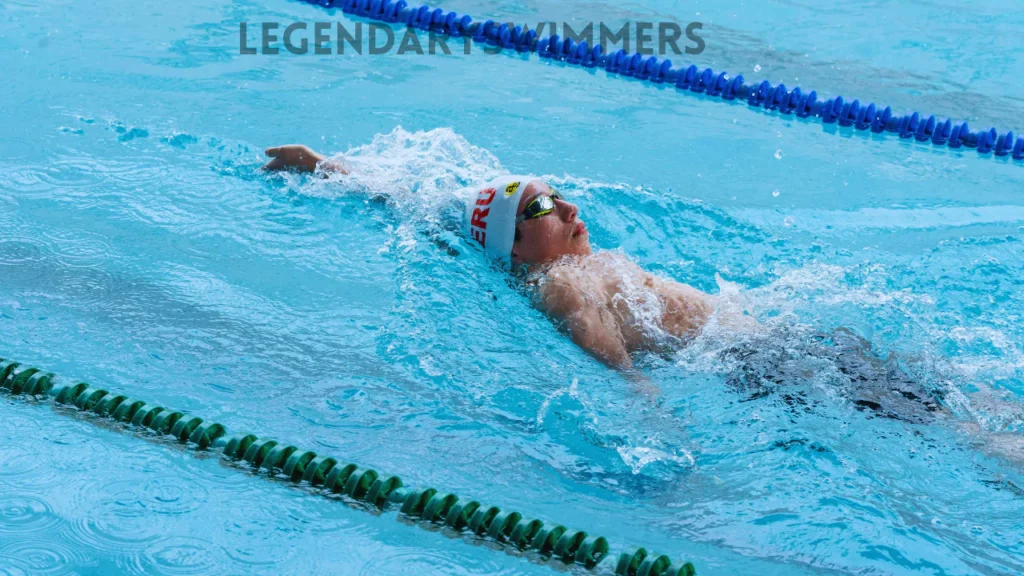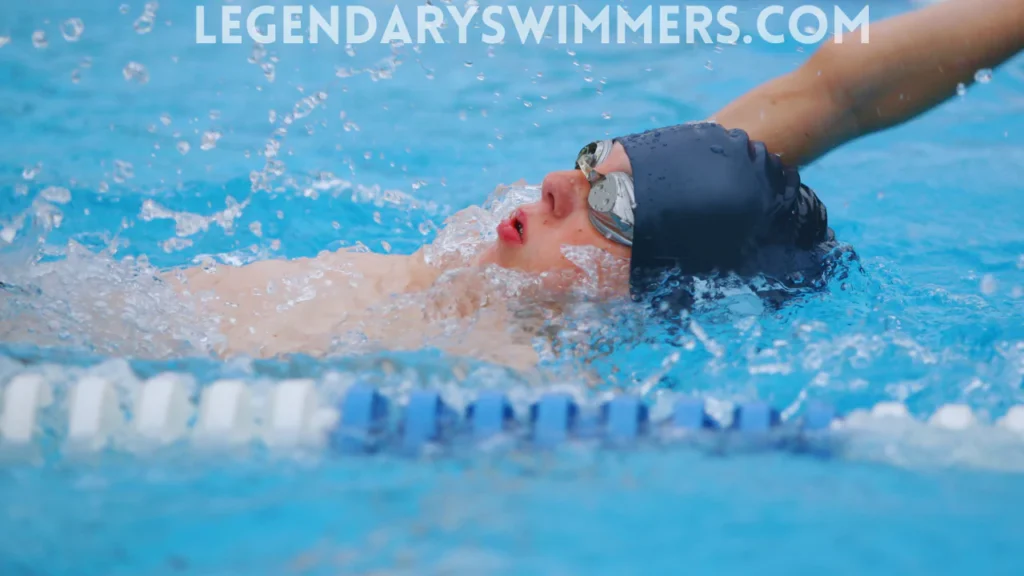
Swim Diapers 101: Everything Parents Need to Know
- Updated:
If you’re a parent planning to take your little one to the pool, beach, or lake, one of the essential items you’ll need is a swim diaper. But what exactly are swim diapers, how do they work, and why are they so important? In this comprehensive guide, we’ll walk you through everything you need to know about swim diapers. Whether you’re preparing for a fun beach day or your baby’s first swim lesson, you’ll find all the answers you need right here.
What Are Swim Diapers?
Swim diapers are special diapers designed for babies and toddlers who aren’t yet potty trained. Unlike regular diapers, swim diapers do not absorb liquid. Instead, their primary function is to contain solid waste (like poop) while allowing urine to pass through. This is critical for maintaining hygiene in public pools, lakes, and other bodies of water.
The most important thing to understand is that swim diapers do not hold urine. They’re designed to contain only solids, which helps prevent accidents in the water from becoming a health risk for others. These diapers come in two main types: disposable and reusable. Each type has its own benefits, and the right choice for your child will depend on your needs, lifestyle, and environmental considerations.
How Do Swim Diapers Work?
Understanding how swim diapers work is essential for parents who want to ensure their child is comfortable and safe in the water. Swim diapers are specifically designed to prevent fecal matter from leaking into the water, which can cause contamination and spread harmful bacteria.
Key Features of Swim Diapers:
- Non-Absorbent Material: Unlike regular diapers that soak up liquid, swim diapers are made from materials that allow urine to pass through while keeping solids contained.
- Leak Guards: Swim diapers are equipped with leak guards that form a secure barrier around the legs and waist, preventing any mess from escaping.
- Comfort: Since swim diapers do not absorb water, they won’t get heavy or sag in the water, which allows your baby to move freely and comfortably. This makes them ideal for swimming lessons, pool parties, or just playing in the water.
By using swim diapers, you’re not only keeping your baby comfortable but also helping to maintain a clean and safe environment for all swimmers. Swim diapers are a crucial element of pool hygiene, as they help to prevent the spread of germs like E. coli and other bacteria that can be present in feces.
Types of Swim Diapers: Disposable vs. Reusable
Swim diapers come in two main types: disposable and reusable. Let’s break down each one so you can make an informed choice about what works best for you and your baby.
1. Disposable Swim Diapers
Disposable swim diapers are similar to regular disposable diapers but are designed for use in water. They are convenient and affordable but are a one-time-use product.
| Advantages of Disposable Swim Diapers | Disadvantages of Disposable Swim Diapers |
|---|---|
| Convenience: Disposable swim diapers are easy to use, especially when traveling or when you don’t have access to laundry facilities. | Environmental Impact: Since they are single-use, disposable diapers contribute to landfill waste, making them less eco-friendly. |
| Hygiene: They’re a great option for parents who want to dispose of the diaper immediately after use, ensuring cleanliness and convenience. | Cost Over Time: While disposable swim diapers are cheaper upfront, they can add up in cost over time, especially if you use them frequently. |
| – | – |
2. Reusable Swim Diapers
Reusable swim diapers are made from fabric materials and are designed to be washed and reused multiple times. They are a more eco-friendly option and can be cost-effective in the long run.
| Advantages of Reusable Swim Diapers | Disadvantages of Reusable Swim Diapers |
|---|---|
| Eco-Friendly: Reusable swim diapers can be washed and reused, reducing waste and helping the environment. | Maintenance: Reusable swim diapers require regular washing and care, which can be inconvenient if you’re travelling or on-the-go. |
| Comfort: These diapers are often softer and more comfortable than disposables, and many come in fun, colourful patterns. | Upfront Cost: They typically cost more initially compared to disposables, which might be a deterrent for some families. |
| Cost Savings: Although they may be more expensive upfront, reusable swim diapers can save you money in the long term since they’re designed to last for several uses. | – |
Choosing the Best Swim Diaper for Your Baby
When selecting a swim diaper, there are several factors you should consider to ensure you pick the best one for your child. These factors include size, fit, absorbency (or lack of), comfort, and style. Let’s take a closer look at what to consider:
1. Size and Fit
The right size is critical for a swim diaper to function properly. A poorly fitting diaper may result in leaks, while one that’s too tight can cause discomfort or even chafing.
- Fit Tips:
- Swim diapers should be snug but not too tight. They should stay in place around the waist and legs without leaving red marks.
- Most brands offer swim diapers in sizes based on your baby’s weight or age range, so check the packaging for sizing recommendations.
2. Material
Swim diapers are usually made from materials like nylon, polyester, or a blend of both. These materials are lightweight and quick-drying, making them ideal for water use.
- Reusable diapers tend to be made from soft, breathable fabrics, which makes them comfortable for your baby to wear all day.
- Disposable diapers are typically made from more synthetic materials, and designed for a single-use purpose.
3. Leak-Proof Design
The most important feature of a swim diaper is its ability to contain solids while allowing urine to flow freely. Look for swim diapers with elasticized leg cuffs, waistbands, and leak guards to help prevent accidents from spilling into the water.
Swim Diapers and Pool Safety: Why They Matter
Using swim diapers is not just about comfort or convenience – it’s also about safety. Public pools and beaches have strict hygiene standards, and many require babies and toddlers to wear swim diapers before entering the water. This helps maintain water quality and prevents the spread of potentially harmful germs and bacteria.
In fact, the CDC (Centers for Disease Control and Prevention) advises that children who aren’t potty-trained wear swim diapers when they’re in or around water. This is especially important because fecal matter in water can spread diseases like E. coli and Giardia, which can cause severe illnesses.
Public Pool Guidelines: Many pools have rules that require children who aren’t potty trained to wear swim diapers. This is to prevent accidents that could lead to pool closures and ensure the water remains clean for all swimmers.
Benefits of Swim Diapers for Parents
Swim diapers offer a number of benefits, not only for your child but also for you as a parent. Here’s why they’re a must-have when it comes to taking your baby swimming:
- Peace of Mind: Swim diapers allow you to enjoy your swim without worrying about the possibility of accidents.
- Convenience: Swim diapers are easy to put on and take off, especially when your baby is wet. Disposable swim diapers are a great option when you’re on the go, while reusable ones are easy to wash and reuse.
- Comfort for Your Baby: Swim diapers are designed to be lightweight, so your baby can splash around in the water without being weighed down by a soggy diaper.
How to Properly Use Swim Diapers
Using swim diapers correctly is essential for both comfort and hygiene. Here are some tips to ensure your little one is ready for the water:
- Put on a Fresh Swim Diaper Before Water Activities: Always change your baby into a clean swim diaper right before heading to the pool, beach, or lake. Don’t use regular diapers, as they will absorb water and become uncomfortable for your child.
- Change Swim Diapers Frequently: Swim diapers should be changed immediately if your child has a bowel movement. If your baby is wearing a disposable swim diaper, it can be easily disposed of. If using a reusable one, remove it, bag it up, and wash it after your trip.
- Check for Proper Fit: Ensure the swim diaper is snug around the waist and legs to prevent leaks. If your child is between sizes, opt for the larger size to avoid tightness or discomfort.
Expert Insights: About Swim Diapers
Do Swim Diapers Hold Urine?
No, swim diapers do not absorb urine. They are designed to contain solid waste only. This ensures that the diaper doesn’t become heavy or uncomfortable for your child while they’re in the water.
How Often Should Swim Diapers Be Changed?
Swim diapers should be changed immediately if they become soiled. Be sure to check your child’s swim diaper every 30-60 minutes to ensure it hasn’t leaked or become uncomfortable.
Can You Use Regular Diapers Instead of Swim Diapers?
No, regular diapers are not suitable for water activities. They will absorb water and swell, making them uncomfortable for your baby and causing leaks. Always use a swim diaper specifically designed for water use.
Are Reusable Swim Diapers Better Than Disposable Ones?
It depends on your lifestyle and preferences. If you visit the pool frequently or want to reduce your environmental impact, reusable swim diapers are a great choice. However, if you’re looking for convenience or only need them occasionally, disposable swim diapers may be the better option.
Conclusion: Ready to Swim?
Swim diapers are an essential item for any parent taking their baby or toddler to the water. Whether you choose disposable or reusable swim diapers, these products help to maintain pool hygiene, provide comfort for your little one, and give you peace of mind while you enjoy swimming together. By understanding how swim diapers work and how to choose the best one, you can ensure your baby’s safety and comfort during all water activities.
For more tips, guidelines, and expert advice on baby swimming and water safety, visit Legendary Swimmers, your go-to resource for everything related to safe and enjoyable swimming with your little one.

Natasha Nicole Leyva
Hi, I’m Natasha—swimmer, coach, and aquatic fitness enthusiast. My journey began in New Zealand after a professor recommended swimming to help with a knee injury. The low-impact nature of swimming worked wonders, and it quickly became my favorite form of exercise. This passion grew into a thriving swim academy, and soon, requests for aquatic fitness classes started pouring in. After becoming certified, I realized how powerful water workouts could be for recovery and fitness. Now, I share my expertise here to help others experience the benefits of aquatic movement—whether for recovery, fitness, or fun!







